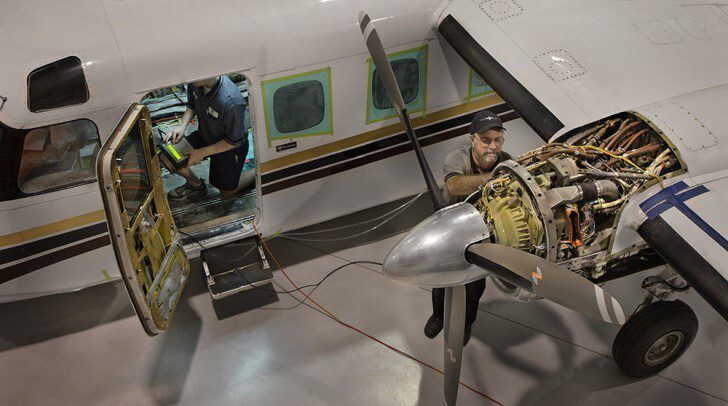First published in Flight Levels Online, Spring 2014 issue

Twin Commander-specific formal training for maintenance technicians is now available in a factory-authorized course.
This seven-day, 42-hour course is designed to meet the training requirements of the technician who will be working on Twin Commander 690, 690A, 690B, 690C, 690D, 695, 695A & 695B aircraft at a factory-authorized service center. The class covers 19 different subjects ranging from manuals and bulletins to avionics. A technician with no previous Twin Commander experience may require some additional subject matter exposure depending on prior experience in the industry.
The course is taught by Mike Grabbe, who taught the Twin Commander maintenance course at FlightSafety International for more than six years, and is now Technical Advisor and Manager of Training for Eagle Creek Aviation Services in Indianapolis.
Course content includes:
- Familiarization with component locations.
- Introduction to normal systems operation leading to analyzing system malfunctions in a cost-effective manner.
- Discussion of recent manufacturer’s service information and product updates.
- Opportunities to share maintenance experience with other course participants.
Actual hours spent on each subject vary depending on the experience of class participants and the topics discussed.
The class culminates with a 100-question graded exam. Technicians who successfully complete the class each receive an official certificate and record of training.
The inaugural class was held in March; a second class is scheduled for June 23-July 1, and a final 2014 session October 13-21. Class size is limited to 10 participants, and the June and October classes have openings.
The training is conducted at Eagle Creek Aviation Services in Indianapolis, where Grabbe and students can simply walk a few steps from the classroom to the busy shop floor to examine airplanes and components in various stages of maintenance and upgrades.
Twin Commander Aircraft recommends that maintenance personnel attend update training at least every 12-18 months to ensure continued technical competency and accuracy of maintenance-related information.
Grabbe also teaches the two-day Twin Commander Service Bulletin (SB) 241 training class that takes the technician step by step through the service bulletin in a classroom environment using associated publications, engineering drawings, physical training aids, and discussions of potential traps. Clients are issued a training binder containing a printed copy of the presentation and associated service publications, plus a CD with relevant information.
The SB241 class also finishes with a graded exam, and successful candidates receive a certificate of training and a serialized training verification stamp. The stamp is used to mark compliance card and logbook entries to show that the work was performed and/or supervised by a trained individual.
Because of the complexity of performing the inspections and modifications detailed in SB241, the service bulletin specifies that the work be done by technicians who have completed the special training.
The next SB241 training classes will be held October 6- 7.
